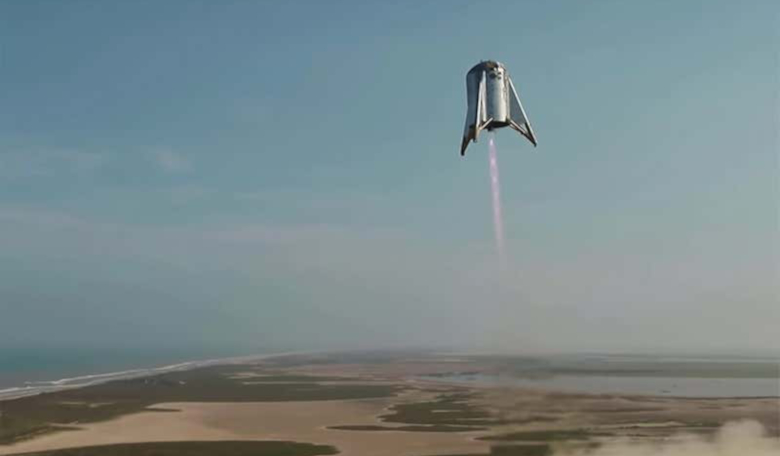SpaceX’s Starship “hopper” spacecraft – the company’s experimental version of its planned Mars launch system called Starship – made its highest and longest flight yet from the firm’s Boca Chica, Texas, test facility this week. The event also marked the spacecraft's last flight too.
The squat steel prototype is a roughly 18 metre (60-foot) tall vehicle that resembles a very large version of Star War’s R2D2 character. It is a sub-scale version of the Starship’s propulsion system, that will one day loft the 100-passenger craft off Earth's surface on an interplanetary adventure to the Red Planet.
This is the fourth time the “water tower,” as Musk has previously called it, has left the ground, with each progressive “hop” flying higher. Twice in early April it cleared the surface but was kept on a leash for safety's sake both times.
Then in July, Starhopper made its first untethered flight, one day after a glitch forced it to abort an earlier attempt. It reached about 18-20 metres (65 feet), before slowly descending to touchdown on a nearby landing pad.
Starhopper’s latest flight, which lasted just 57 seconds, was enough to see the stumpy cylinder-shaped craft reach its FAA-approved 150 metre (492-foot) altitude limit, just after 6 pm EDT (22:00 GMT). "Congrats SpaceX team!!" SpaceX CEO Elon Musk wrote on Twitter after the flight.
Despite being a roaring success, this will be Starhopper's last test flight, as two teams in Florida and Texas are building bigger prototypes that are more similar to Starship. These will be fitted with three engines each and more robust landing gear, capable of test flights up to 20 kilometres high.
Starhopper is the first vehicle to use a SpaceX-designed Raptor engine burning cryogenic methane with liquid oxygen. The finished version will be much larger and will be composed of six engines compared to the prototype’s single one. If everything goes well with the test campaign, Starship and Super Heavy could be ready to fly as early as 2021 SpaceX representatives have said.
Although it could one day be the spacecraft that makes the inaugural journey to Mars, SpaceX have said that in the meantime, Starship and Super Heavy will take over all of the company's usual spaceflight duties, from launching satellites to making crewed trips to the ISS and Moon. It could even be used for point-to-point travel around Earth, Musk said.
Also hoping for continued success is Japanese billionaire Yusaku Maezawa; the entrepreneur has the Starship-Super Heavy system lined up for a round-the-moon flight set sometime in 2023.











